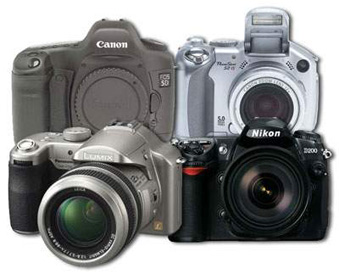

 The Accurate Reloading Forums
The Accurate Reloading Forums  THE ACCURATE RELOADING.COM FORUMS
THE ACCURATE RELOADING.COM FORUMS  Computers, Hi-Tech & Product Reviews
Computers, Hi-Tech & Product Reviews  Practical Photography For Hunters
Practical Photography For Hunters  Ai Photo Editing Is Here
Ai Photo Editing Is HereGo  | New  | Find  | Notify  | Tools  | Reply  |  |
| One of Us |
Bound to happen...
___________________ Just Remember, We ALL Told You So. | ||
|
| One of Us |
Numerous software developers have been creating applications that can be used for photo editing, on both portable devices such as phones, and computers. Luminar is a good one, and so the following: -OneOne PhotoRaw (the latest version is PhotoRay 2021, but I am still using 2020). -DXO PhotoLab 3, with the NIK software bundle (this one is my favorites) There are a few others that I don't remember at the moment, but all can be used as standalone applications, or as PhotoShop plugins. Also every one of them has something that is different or easier to use them the rest. For example, replacing skies like done with Luminar is quite a good feature. This is a video of what features of Luminar AI are interesting. Also, keep in mind that the Sky AI option is not included in Luminar AI being released in December. That option is supposed to be a in 2021 update to LuminarAI. I plan to preorder a version of it, since the updates usually are free. https://www.youtube.com/watch?v=A6bE7XpmjSo | |||
|
| One of Us |
I've used lots of different software filters with a lot of mixed results. I've given up on all of them and simply move the sliders myself. 90% of my pictures are desert settings so I already know what needs to be punched to get a finished product. But will be interesting to see if AI is any smarter with better results. I believe video will be it's biggest impact - at least here's hoping maybe... ___________________ Just Remember, We ALL Told You So. | |||
|
| One of Us |
Luminar 4 includes an option for portraiture in addition to the rest. I am just waiting for Luminar and others to become powerful enough as standalone applications for me to stop using PhotoShop CS6. I don't want to use any app that requires monthly fees, and being online. Luminar has a video you can watch: https://skylum.com/luminar?utm...uminar%20%5Bexact%5D | |||
|
| One of Us |
Thanks for the information everyone! | |||
|
| Administrator |
[QUOTE]Originally posted by Opus1: I've used lots of different software filters with a lot of mixed results. I've given up on all of them and simply move the sliders myself. 90% of my pictures are desert settings so I already know what needs to be punched to get a finished product. But will be interesting to see if AI is any smarter with better results. I believe video will be it's biggest impact - at least here's hoping maybe...[/QUOTE It does not. I am in the same boat as you are, and despite all the claims, so far I have not found anything that will beat working on PS. | |||
|
| One of Us |
Saeed, I am in the process of switching from Adobe CS6 to DXO Photo Lab 4. There is a learning curve, of course, but this is normal for every photo-editing app out there. I am doing this because I prefer standalone apps like the Adobe CS4, 5, and 6. But Adobe does not support those apps anymore. Now their online CC account and monthly payments is the only option. These payments aren't a big deal for professional photographers who edit their photos in a daily basis, but it is expensive for people who aren't in the business of photography, or others who don't edit photos every day. With apps such as DXO Photo Lab 4-which may also include the optional NIK Software Package, I can do the same things I can accomplish with CS6. The only thing this app is lacking is a portrait editor, but another app I use, "OneOne Photo Raw," includes a portrait editor. Here is an example of what one can do with a $49.00-$60.00 standalone app (no monthly payments). The following example is just one out of numerous things one can do with Affinity Photo. in this case, lets say that you shoot RAW, ad want to develop one RAW image: https://affinity.serif.com/en-...top/video/331997643/ What is happening the days is that a great number of photo editors are being created by several companies, to be used as standalone apps that you can pay in full, and install on your computer. There is great competition between the photo-editing software companies, all which are also competing for the market share left behind by Adobe. The new apps can be used to do the same things one can do with Adobe PhotoSop, except that the image editing is done with sliders, while other effects are done automatically by the software. For example, one can let the software to automatically analyze the image, and apply the correct amount of digital noise removal, or just select the amount of noise removal, manually. I don't have Affinity Photo, since I use DXO Photo Lab 4 and the NIK Software bundle. Then if you are a professional photographer and want a standalone app to edit 100MB and larger files from cameras that use over 100MB sensors, there is no application superior to Capture One Pro . It will set you back around $250.00, however. But if you can afford a $63,000 camera such as the Phase One XF, the only software that can handle the files produced by this camera is Capture One. | |||
|
| Powered by Social Strata |
| Please Wait. Your request is being processed... |
|

Visit our on-line store for AR Memorabilia

